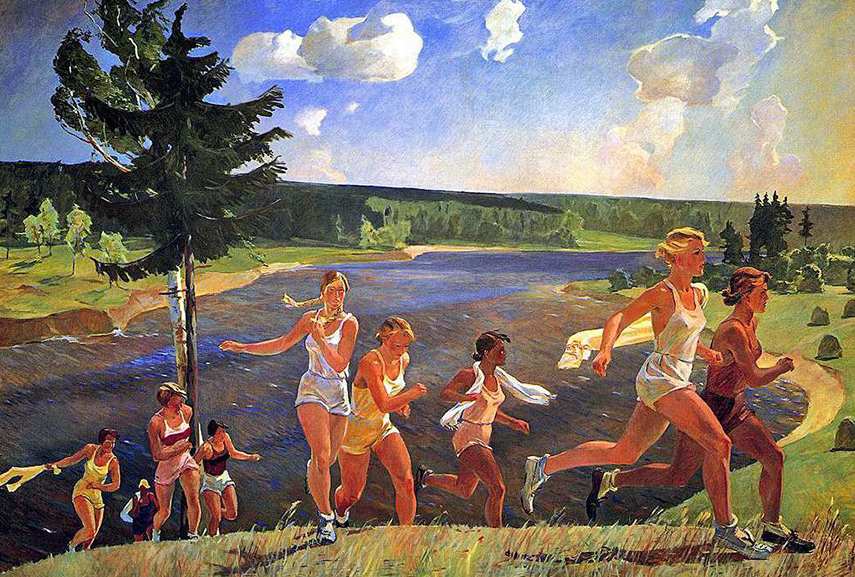Realism in art has long been a powerful means of reflection, capturing the world as it is and revealing the beauty and complexity of everyday life. As we step into the realm of contemporary art, this age-old tradition undergoes a captivating transformation. Contemporary realist artists are redefining the boundaries of their medium, engaging with modern themes and technologies while maintaining a commitment to the authentic representation of reality.
In this vibrant landscape, realism takes on new dimensions, informed by personal narratives, social commentary, and the interplay of light and texture. The pulse of contemporary art resonates through the works of these modern creators, who strive to connect with audiences on deeper levels. By embracing contemporary issues and incorporating innovative techniques, they breathe fresh life into realism, inviting viewers to see the familiar with new eyes and consider the world in all its nuances.

The Evolution of Realism
Realism emerged in the mid-nineteenth century as a reaction against the idealized forms of Romanticism and the constraints of academic art. Artists sought to depict life as it truly was, focusing on everyday subjects, the laboring class, and ordinary scenes. This shift was revolutionary, as it challenged established norms and encouraged a more authentic representation of human experience, often highlighting the struggles and triumphs of the common man.
As realism progressed, it began to splinter into various movements, each bringing its unique interpretation to the art world. Impressionism, for example, focused on capturing fleeting moments and the effects of light, while still grounded in real-life scenarios. In the late nineteenth and early twentieth centuries, social realism emerged, emphasizing political themes and social issues, often portraying the plight of the working class during a period of rapid industrial change.
In contemporary art, realism has evolved yet again, often blending with other styles and movements. Modern realist artists incorporate new technologies, materials, and conceptual elements, pushing the boundaries of what realism can signify. They explore not only the visible world but also subjective experiences and emotions, resulting in a rich tapestry that reflects contemporary society while maintaining the core principle of realistic representation.
Contemporary Techniques and Themes
Contemporary realist art ists are embracing a variety of techniques that blend traditional methods with modern materials. Many artists are utilizing advanced tools such as digital technology alongside classic painting techniques to create pieces that resonate with today's audiences. The incorporation of mixed media, photography, and even installation techniques allows for new forms of expression and interpretation, pushing the boundaries of realism while maintaining a connection to the real world.
Themes of identity, culture, and social commentary are prevalent in contemporary realist art. Artists are increasingly exploring personal narratives and collective experiences through their work, reflecting the complexities of modern life. This focus on contemporary issues, including race, gender, and the environment, provides a powerful platform for dialogue and often challenges viewers to reevaluate their perceptions of reality.
Another significant theme in contemporary realist art is the exploration of technology and its impact on society. Artists are responding to the rapid advancements in communication and visual media, often incorporating elements of digital culture into their artwork. This interplay between the real and the virtual invites viewers to consider how technology shapes our understanding of the world, blurring the lines between authentic experiences and mediated representations.
Impact on Society and Culture
Contemporary realist art serves as a powerful mirror reflecting the complexities of modern life. Artists engage with societal issues such as identity, inequality, and environmental concerns, translating these themes into visual narratives that resonate with the public. This genre encourages viewers to confront their surroundings and invites discussions about the lived experience, fostering a deeper understanding of the diverse narratives that shape our world.
Furthermore, contemporary realist works often challenge the boundaries of traditional representation, expanding the definitions of what is considered art. By employing realistic techniques to depict both the mundane and the extraordinary, these artists elevate everyday experiences and highlight overlooked aspects of culture. This democratization of subject matter empowers individuals from various backgrounds to see their stories represented, promoting inclusivity and broadening cultural perspectives.
Finally, the emotional connection that realist art evokes can inspire collective action and social change. As viewers engage with the artworks, they may feel compelled to address the issues presented, sparking movements or initiatives aimed at improvement. By capturing the human condition in relatable forms, contemporary realism not only enriches the art world but also acts as a catalyst for societal growth and awareness.
